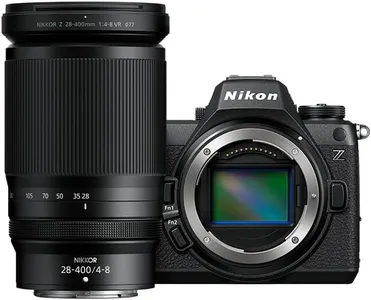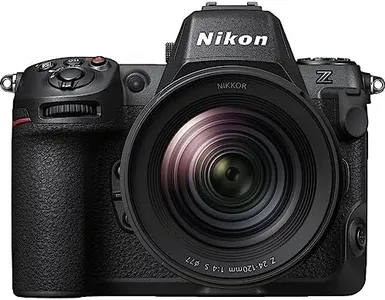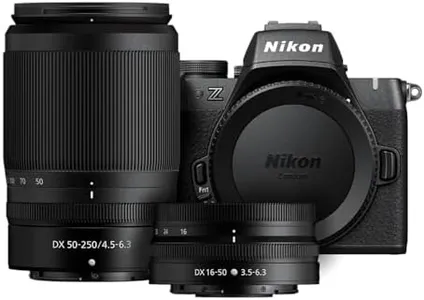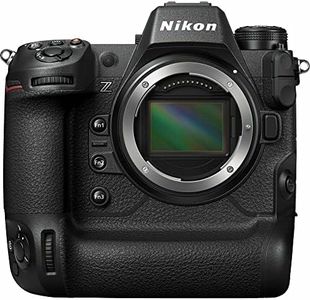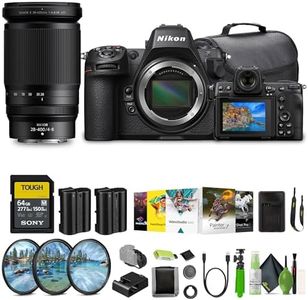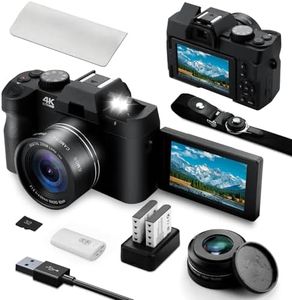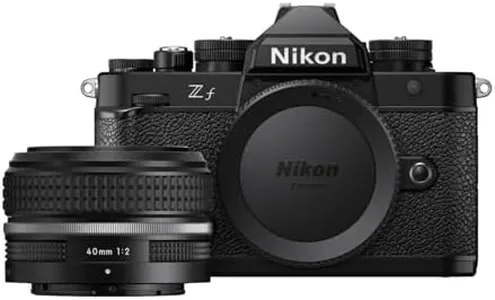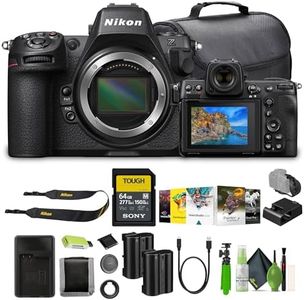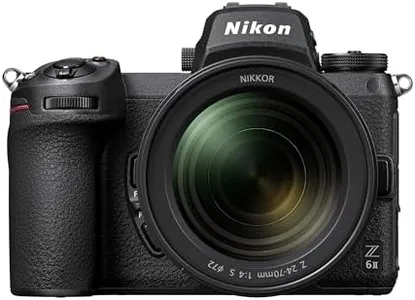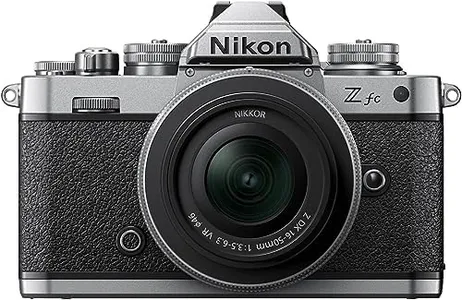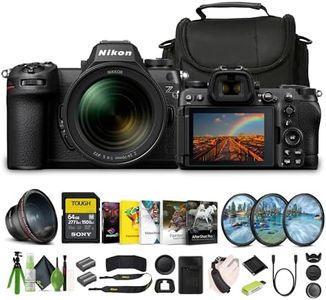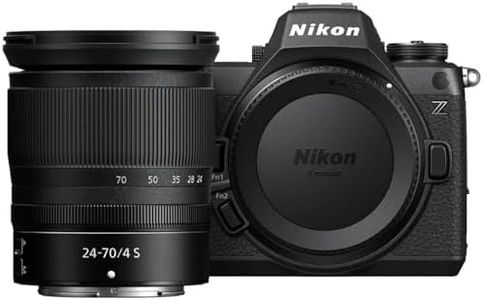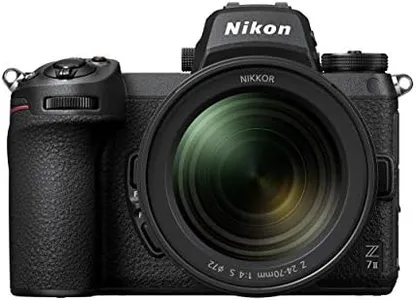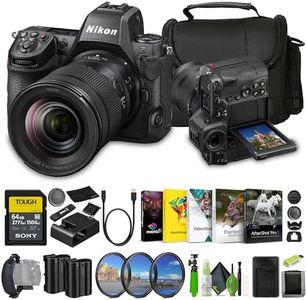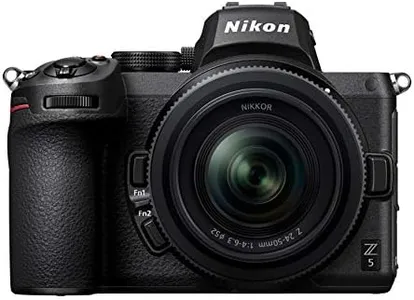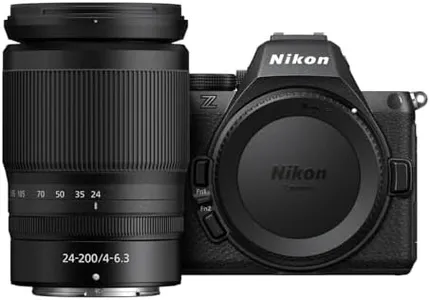10 Best Nikon Mirrorless Cameras 2025 in the United States
Our technology thoroughly searches through the online shopping world, reviewing hundreds of sites. We then process and analyze this information, updating in real-time to bring you the latest top-rated products. This way, you always get the best and most current options available.

Our Top Picks
Winner
Nikon Z6III Mirrorless Camera 28-400mm Lens Kits
Most important from
176 reviews
The Nikon Z6III is a strong choice for both photography and video enthusiasts seeking a full-frame mirrorless camera with excellent versatility. It features a 24.5-megapixel CMOS sensor that balances detail and low-light performance well, supported by a wide ISO range from 100 up to an impressive expanded 204,800 for shooting in very dark conditions. The autofocus system is notably improved, with hybrid phase detection covering 299 points and advanced subject recognition powered by Nikon’s Deep Learning technology, allowing fast and accurate focus even in challenging lighting down to -10 EV. For action shooters, the camera offers a high continuous shooting speed of up to 120 frames per second, ensuring smooth capture of fast movement.
Video capabilities are robust, with internal 6K RAW recording at 60p, oversampled 4K UHD, and options for 4K at 120p and Full HD at 240p for slow motion. This makes it a strong contender for creators who want professional-grade video in a compact body. The electronic viewfinder (EVF) is impressive, delivering a bright (4000 nits) and detailed 5760k-dot display with a fast 120Hz refresh rate, which means the viewfinder image stays clear and smooth even when tracking moving subjects.
Battery life is decent for mirrorless standards, powered by a 2280 mAh lithium-ion battery, but heavy use of video or continuous shooting may require spares. The included NIKKOR Z 28-400mm f/4-8 VR lens is very versatile, covering a broad zoom range suitable for everything from wide scenes to distant subjects, and the built-in 8-stop image stabilization helps keep shots steady. It is worth noting the camera and lens combo weighs over 5 pounds, which might be heavy for casual shooters or travel photographers. The maximum aperture of f/4 to f/8 on the zoom lens is somewhat narrow compared to faster primes, potentially limiting low-light performance without increasing ISO. Additional batteries and memory cards will also be necessary for extended shoots. This kit is well suited for serious enthusiasts or professionals who want a powerful hybrid camera that excels in both photo and video, with excellent autofocus, high-quality EVF, and a flexible zoom lens, though its size and lens aperture may be less ideal for those prioritizing portability or shooting primarily in very low light.
Most important from
176 reviews
Nikon Z 8 with Zoom Lens | Professional full-frame mirrorless hybrid stills/video hybrid camera with 24-120mm f/4 lens | Nikon USA Model
Most important from
217 reviews
The Nikon Z 8 is a powerful full-frame mirrorless camera that caters to professional photographers and videographers looking for high-quality performance and versatility. With its impressive 45.7MP stacked CMOS sensor and EXPEED 7 processing engine, it excels in capturing detailed still images and videos. The camera's advanced autofocus system uses deep learning technology to track a variety of subjects, making it a strong choice for dynamic environments.
One of the standout features is the ability to shoot in both 8K and 4K resolutions, along with multiple frame rates including a rapid 120 fps for video. This makes it suitable for a range of creative projects, from stunning landscapes to fast-paced action shots. The internal recording options like N-RAW and ProRes RAW add to its professional appeal, providing flexibility in post-production.
The Z 8 also boasts a robust electronic viewfinder with full coverage, ensuring you get a clear view of your composition. The tilting 3.2-inch touchscreen is user-friendly, allowing for intuitive navigation and shooting adjustments. Battery life is decent but might not last through prolonged shooting sessions, which could require extra batteries for long events.
While the camera shines in many areas, it may have a learning curve for those new to advanced photography or videography. Its size and weight, at 3.2 pounds, mean it might not be the most portable option for casual users. Additionally, while the lens compatibility with Nikon Z mounts is excellent, those with existing DSLR lenses may need adapters, which could add to the overall investment.
The Nikon Z 8 is best suited for professional users who need high-resolution capabilities and versatile shooting options. However, casual photographers might find it more advanced than necessary for everyday use.
Most important from
217 reviews
Nikon Z50 II with Two Lenses | Compact mirrorless Stills/Video Camera with Easy Color presets and Wireless Photo Sharing | Nikon USA Model
The Nikon Z50 II is a compact and lightweight mirrorless camera perfect for those looking to step up from smartphone photography. It features a 20.9-megapixel APS-C sensor, which captures detailed and vibrant photos even in low light. The camera includes two versatile lenses (16-50mm and 50-250mm) with optical image stabilization, providing flexibility for various shooting scenarios from wide-angle to telephoto shots.
The autofocus system is robust, with 231 points and the ability to track nine different subjects, including specialized modes for birds and airplanes, ensuring sharp focus on moving subjects. For video enthusiasts, the Z50 II offers 4K UHD recording at 60 frames per second and Full HD slow motion at 120 frames per second, delivering high-quality footage with built-in electronic VR stabilization. The electronic viewfinder has a high resolution of 2,360,000 dots, providing a clear and immersive shooting experience. The camera also supports wireless photo sharing via Bluetooth and Wi-Fi, making it easy to transfer photos and videos to your smart device instantly.
However, there are some limitations. The continuous shooting speed is a modest 5 frames per second, which may be a bit slow for action photography. The maximum shutter speed is 1/4000 seconds, which might not be sufficient for freezing extremely fast motion. Additionally, the lenses have relatively small maximum apertures (f/3.5-6.3 and f/4.5-6.3), which could affect performance in very low light conditions. Despite these drawbacks, the Nikon Z50 II is a strong choice for travel, vlogging, and casual photography, offering a good balance of features and ease of use.
Buying Guide for the Best Nikon Mirrorless Cameras
Choosing the right Nikon mirrorless camera involves understanding your needs and matching them with the camera's specifications. Mirrorless cameras are known for their compact size, advanced features, and excellent image quality. To make an informed decision, you should consider several key specifications that will impact your photography experience. Here are the most important specs to look at and how to choose the best fit for you.FAQ
Most Popular Categories Right Now
